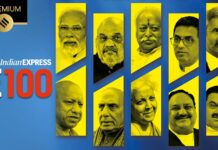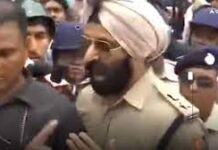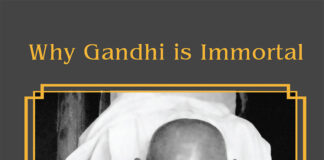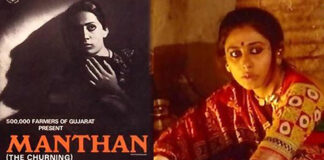
Caste Census – Challenges of Controlling the Long-Term Spin

Bihar is the first state to complete the caste census and bring out the results showing that OBCs and EBCs comprise more than 60% of the population while Scheduled Castes comprise about 20% of the population, Scheduled Tribes less than 2% of the population and around 15% belong to the general category i.e. upper caste Savarnas. The census has thrown up certain questions, especially about the long-term political narratives, which we will try to take stock of here.
- What is the basic idea behind caste census?
The basis idea behind the caste census is absolutely worthwhile because without statistical measurement and data there is no way to understand whether the policies of the government is leading to any real change in the lives of the people, particularly those who belong to the historically deprived sections of society.
We also require numbers and data to assess the claims of any group regarding their ‘backwardness’ or deprivation. If any group says that they are backward, then we need data to understand their claims to that status. For instance, in Maharashtra Marathas want that government should include them in the category of OBC, but we need hard data to assess whether their claims have any basis at all or it is a merely political demand. On the other end of the spectrum, there are communities who are so deprived that they have not been able to take any benefits of the reservations at all. For instance, the Kolam Adivasis in Vidarbha live a life of such poverty and illiteracy that even though they fall under the Scheduled Tribes category, they have hardly benefited from reservations at all.
- Is caste census necessary for targeted policies?
Yes, for any kind of welfare policy, data collection is required. If used wisely, caste census can transform lives of people. But therein lies the hitch. Can we be sure that it will be used wisely to benefit the marginalised? Or will it be used cynically as a political tool to win elections?
- Will the caste census lead to honest engagement with real disparities?
Legally speaking, the Constitution of India does not countenance communitarianism. It places a liberal, modern idea of a rights-bearing individual citizen at the centre of the country’s politics. This idea of the rights-bearing individual citizen is not seen in terms of caste, religion, class, sex or religion – but as an equal citizen of the country. However, our founding fathers and mothers could not overlook the historical injustices that have been heaped on communities in the name of caste, class, religion or gender and therefore they tried to strike a balance between the rights of the individual which negates all other associations and the rights of the community which mediates the rights of the individual at the social level.
My reading of the Constitution is that the Individual is at the centre while the qualifications arising out of the demands and exigencies of caste, groups and communities are qualifications of a temporary nature which were included by our founding fathers and mothers with some inhibitions. Community rights are never included as a Fundamental Right but always as a qualification which indicates a certain liberal philosophy underlying the Constitution.
Over the years these two distinct, almost conflicting strands have emerged in how we read the Constitution. Time will tell whether our political leaders take the individual citizenship strand ahead or build on the communitarian aspects.
Enumeration of caste may or may not lead to honest engagement with disparities. If there is honest intent then there will be honest engagement, if not then there will be multiplication of problems. Census gives us the data, it does not provide the motivation.
We must also be aware that the game of numbers is a double-edged one. Going back to the issue of Maratha reservation – it is after all a game of numbers. Marathas know that they have substantial numbers which they can leverage to achieve reservation and for that they don’t need a caste census.
- What is the politics of not counting caste?
The politics of not counting caste is that if we do not count we will never know where the benefits going. There are castes who are historically powerful and have cornered more than their share of educational, material and political resources. There are also creamy layers within each ‘reserved category’ who have achieved more success than others who have been left behind.
In fact, Bihar was a pioneer in creating Extremely Backward Classes within the larger OBC category and the Mahadalits as a category within Schedule Castes in order to ensure that benefits reach those who remain deprived. It was Bihar which pointed out that the ‘trickle down’ theory does not work and that there is an elite section in every category which corners the benefits of caste reservations.
The historical caste census that Bihar has conducted should lead to fairer, more just distribution of resources and perhaps the 50% ceiling on reservations ordered by the Supreme Court in the Indira Sawhaney Case will need to be breached for that.
5. What the long-term implications of the caste census?
We hope that the caste census data will be used for framing and implementation of social justice laws and policies. However, the present day political situation is fraught with faultlines and therefore we should be aware that there will be a counter-discourse to the caste census. The Prime Minister is reported to have said that by demanding caste census, Congress wants to take away minority rights. This statement is an indication of how the long-term counter-discourse will play out. The Prime Minister is asking that if 63% are OBCs and EBCs then do they necessarily ‘deserve’ 63% of the political space and resources? He is invoking Dr. Manmohan Singh’s statement that minorities and Muslims have the first right over the resources of the country. In effect, the Prime Minister is giving a political spin to the caste census.
Votaries of the caste census will have to prepare themselves for this type of political spin that the opposite camp/opposite ideological forces might try to give. And if they are successful in giving that spin over a long period of time, the result will be extremely devastating because ‘Jiski jitni sankhya bhari, uski utni bhagidari’ will be given a spin to mean that since the Hindus form a majority of the population, they have a natural right of a majority of resources. This spin, if it remains uncontained and unchallenged, will only lead to further strengthening the Hindutva ideology and regime.
Congress and the INDIA alliance will have to prepare itself for a cohesive answer to this kind of spin. And this dynamics may play out over an extremely long period of time. We have to remember that the seeds of Hindutva were planted in 1920s and 30s and we are seeing the impact of that in the present day. Similarly, the seeds of caste census is being sown today and over many years of discourse and counter-discourse, perhaps fifty or hundred years later our future generation will live through the full implications.
One can only hope that caste census will prove to be an instrument to further justice and equality rather than become another tool of oppression of minority and weaker sections.
-Dr. Kalyan Kumar
(Dr. Kalyan Kumar is a lawyer who practices in District Court, Chandrapur and Nagpur Bench of Bombay High Court. The author can be reached at advkalyankumar1@gmail.com)






